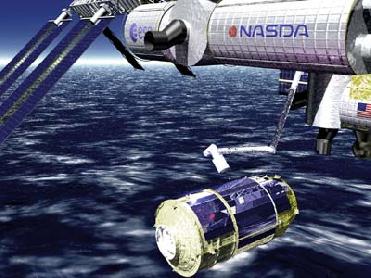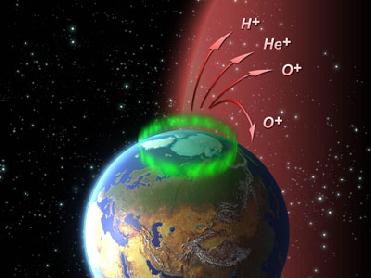
TOKYO (BNS): The Japanese unmanned cargo transfer spacecraft which will deliver supplies to the International Space Station has completed a crucial test in the run up to its 2009 launch.
With the US space shuttle mission to retire in 2010, HTV based on an agreement with Russia, Europe and US, which control the ISS, has been drawing attention as a future carrier of goods to the station.
In February earlier this year, NASA Administrator Michael Griffin expressed high hopes for the HTV, saying it was expected to make a large contribution in the supply of goods to the ISS.
The Japan Aerospace Exploration Agency, JAXA, has been working on the design, on and off, since the early 1990s. The spacecraft was originally to be launched in 2001.
A thermal vacuum test on the first flight vehicle of the H-II Transfer Vehicle (HTV) has been carried out at the Spacecraft Integration and Test Building at the Tsukuba Space Center, August 28.
The purpose of the test is to evaluate the thermal design of the structure and to verify its endurance in the harsh environment of space by simulating the vacuum and thermal environment in space.
Thermal vacuum tests for the Pressurised Carrier and Unpressurised Carrier have already been completed, and the main part with the Avionics Module and Propulsion Module combined is now in the 13-meter diameter space chamber for testing.
The test will be completed in early September before the acoustic test and functional test are performed. After all the test results are reviewed to make sure that no problem is left unsolved, the vehicle will be transported to the Tanegashima Space Center for final launch preparations.
The HTV "Technical Demonstration Vehicle" (initial flight vehicle) is scheduled for launch during Japanese FY2009. Thereafter, one or two HTVs per year are planned for launch. The H-II Transfer Vehicle (HTV), built and developed in Japan, is an unmanned cargo transfer spacecraft that will deliver supplies to the International Space Station (ISS).
The HTV will be launched from the Tanegashima Space Center aboard an H-IIB launch vehicle with up to 6,000kg of supplies. When the HTV approaches close to the ISS, the Space Station Remote Manipulator System (SSRMS), known as "Canadarm2," will grapple the HTV and berth it to the ISS. After the supplies, such as food, clothes and a variety of experiment equipment, are unloaded, the HTV will then be loaded with waste materials, including used experiment equipment or used clothes. The HTV will then undock and separate from the ISS and reenter the atmosphere. While the HTV is berthed to the ISS, the ISS crew will be able to enter and remove the supplies from the HTV Pressurized Logistics Carrier.
In addition to Russia's cargo spacecraft, Progress, and the U.S. Space Shuttle, the Automated Transfer Vehicle (ATV), developed and built by the European Space Agency (ESA), and Japan's HTV will be utilized for delivering supplies to the ISS. Among these cargo-carrying spacecraft, the HTV is the only unmanned vehicle that can carry both pressurized and unpressurised cargo. This is a unique special feature of the HTV.
HTV is four meters across and about 10 meters long, a size large enough to accommodate a sightseeing bus. It consists primarily of three parts: (1) A propulsion module installed at the rear and composed of main engines for orbit change, Reaction Control System (RCS) thrusters for position control, fuel and oxidizing reagent tanks, and high-pressure air tanks; (2) An avionics module installed in the center part, with electronic equipment for guidance control, power supply, and telecommunications data processing; and (3) A logistics carrier that stores supplies.
 Previous Article
Previous Article













The Indian Air Force, in its flight trials evaluation report submitted before the Defence Ministry l..
view articleAn insight into the Medium Multi-Role Combat Aircraft competition...
view articleSky enthusiasts can now spot the International Space Station (ISS) commanded by Indian-American astr..
view article